Belize offers arguably the best diving in the western hemisphere. The sheer number and variety of dive sites is astonishing, the marine environment is well protected, and there are some excellent dive schools. Lighthouse Reef, one of the atolls, is where you’ll find the much-touted Blue Hole, which looks as if it was created by a bomb blast but is actually the result of a collapsed cavern. There are several shipwrecks in the area that have formed artificial reefs, which you can explore, and there’s the Half Moon Caye Natural Monument, which in 1982 became the first marine location in Belize to be made into a preserve. In southern Belizean waters there is good diving around most of the cayes – Tobacco Reef, Columbus Reef, and South Water Caye particularly – but Glover’s Reef, farther offshore, is the place that people rave about. Designated as a marine preserve, it is a large atoll with some epic wall diving and beautiful snorkeling gardens.
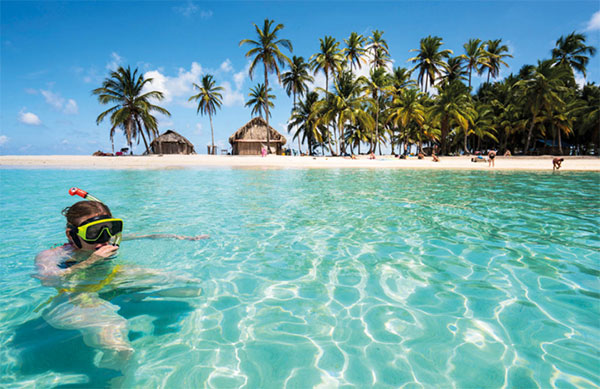
Snorkeling from Isla de Perro, Panama.
iStock
The Bay Islands of Honduras – Roatán, Utila, and Guanaja – are each a world class diving destination. Aside from the benefit of being inexpensive, the diversity of the species here is impressive. Dolphins, sea turtles, nurse sharks, manta rays, and whale sharks are all frequently seen.
Caving
To the ancient Maya, caves were entrances to the underworld – Xibalba – the ‘Place of Fright.’ Recent research indicates that every major Maya settlement was built near a cave, usually a natural one, though in some cases an artificial chamber was hollowed out of the rock. Caves were essential elements in the Maya belief system and, although the ancient Maya never made permanent settlements in caves, every cave so far explored in the region exhibits evidence of a Maya presence long ago. From cave entrances to deep underground, records of ceremonial visits remain in the form of pottery, petroglyphs, carvings, and fire-hearths.
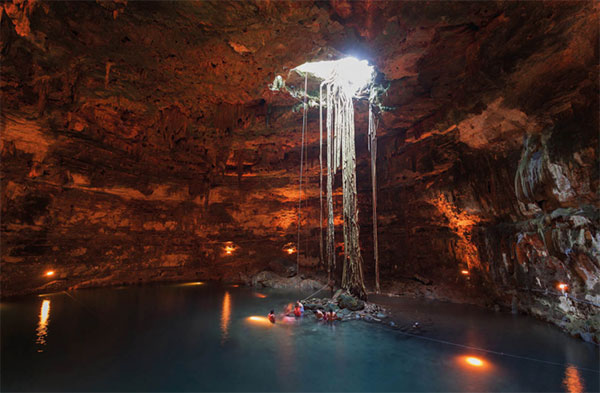
A cenote in Chichén Itzá.
Shutterstock
In Belize, visitors can take an amazing journey into the realm of Xibalba. Caves Branch Jungle Lodge, on the Hummingbird Highway, 21km (13 miles) south of Belmopan, has the best guided caving trips in the Maya world. Ian Anderson’s Cave Branch Jungle Lodge, on the bank of the Caves Branch River, midway between the huge St Herman’s Cave and the Blue Hole National Park, has a range of accommodations, from dorm rooms to secluded cabaña suites.
In Guatemala, the huge Candelaria cave systems, extending for around 80km (50 miles) in length, contain some vast caverns. Confusingly, there are at least four separate access points, but the Complejo Cultural de Candelaria near the town of Raxrujá contains the most impressive chambers. There are more remarkable caves near Semuc Champey, including the Lanquín cave, which is best visited at dusk to view the thousands of bats that emerge from the main cavern.
The Belize Barrier Reef reserves were given Unesco World Heritage Site status in 1996, confirming the global importance of the Caribbean reefs and their marine life.
Yucatán is riddled with cave networks. Some of the most impressive are the Río Secreto, a wet and dry cave system which you explore in a wetsuit and by torchlight, clamboring over rocks and swimming part of the way; it is near Xcaret, south of Playa del Carmen. The caves of Loltún, which are well organized for visitors, include the chance to see rock art and carving dating back to ancient Maya times. Other possibilities for a caving trip include the multiple cave systems around Oxkintok, Balankanché, and Dzitnup.
Hiking
With dozens of national parks scattered in some of the world’s most biodiverse terrain, Central America offers some of the finest walking – jungle, mountain, and coastal hikes – in the world. The spellbindingly dramatic landscape of lofty peaks, verdant river valleys, empty beaches, thick rainforests, and traditional Indigenous villages are linked by a web of trails, paths, and dirt tracks in various states of repair.
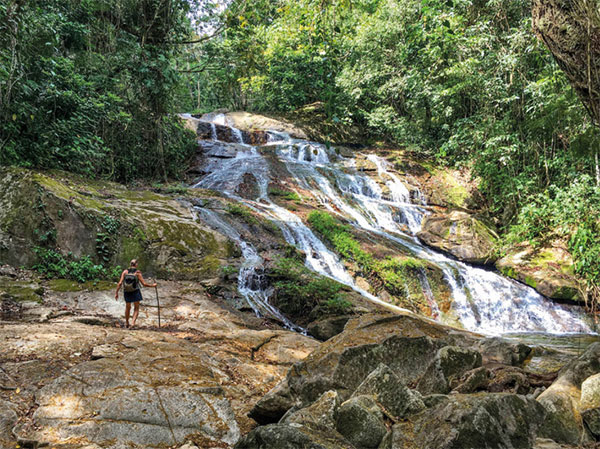
Hiking in Bocawina National Park, Belize.
iStock
Lake Atitlán, a mandatory destination for every visitor to Guatemala, is world-class trekking country. An idyllic network of trails snakes around the steep banks and volcanic slopes of the lake, connecting all of the 13 shoreside settlements, past patchwork cornfields and vegetable gardens. If you only want to walk one section of the lake, then the five-hour trail between Santa Cruz La Laguna and San Pedro La Laguna is especially picturesque, as it passes through some of the least populated parts of the lakeshore, the path clinging to the edge of the caldera at times.
Honduras’ national park system contains several impressive trail networks, such as in Montaña de Celaque, Pico Bonito and La Tigra. Funding for the country’s parks fluctuates and they can be sorely understaffed, so it’s important to get updated travel information before visiting. Costa Rica has dozens of great hikes on well-trodden trails, such as those in Manuel Antonio, the Arenal Volcano, and Monteverde. The country’s top hike is through the rich biodiversity of Corcovado National Park. In El Salvador, the cloud forest trail to El Trifinio in Montecristo National Park is the most celebrated trek.
Sport fishing
One of the premier destinations on earth for big game sport fishermen is Central America’s Pacific coast. Marlin, sailfish, yellowfin tuna, and dorado are all attracted to the calm, warm waters and the numbers here are staggering. Billfish and dorado can be caught year-round, while sailfish boats can often release dozens in a day. On jungle rivers and freshwater lakes, peacock bass, tarpon, and rainbow bass are commonly caught, while the saltwater flats in countries like Belize are ideal for bonefish.
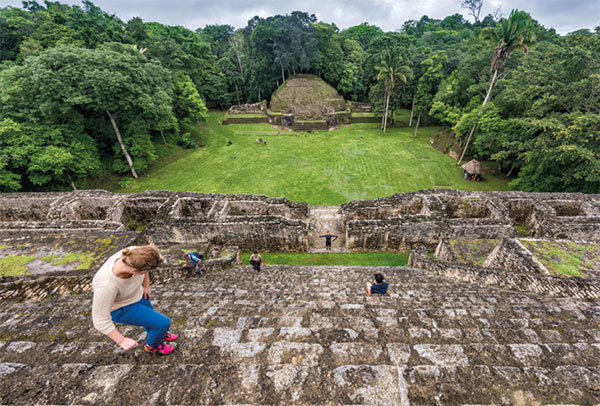
Tackling the Mayan ruins at Caracol, Belize.
Getty Images
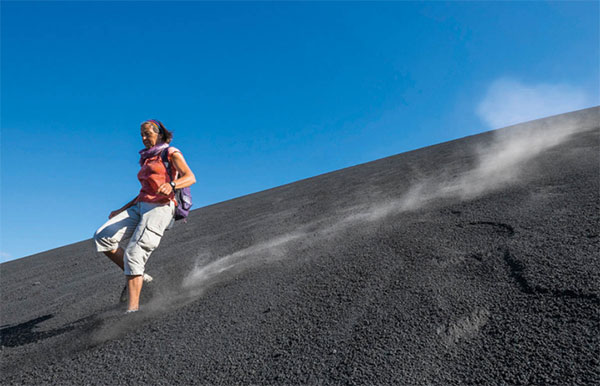
Descending Nicaragua’s Cerro Negro volcano in the Cordillera de los Maribios, the youngest volcano in Central America.
Getty Images
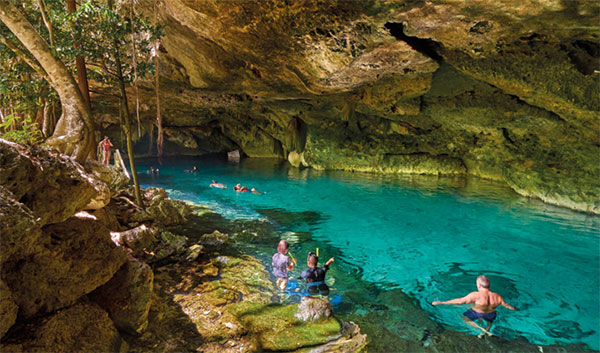
Swimming in Cénote dos Ojos, Yucatán.
SuperStock
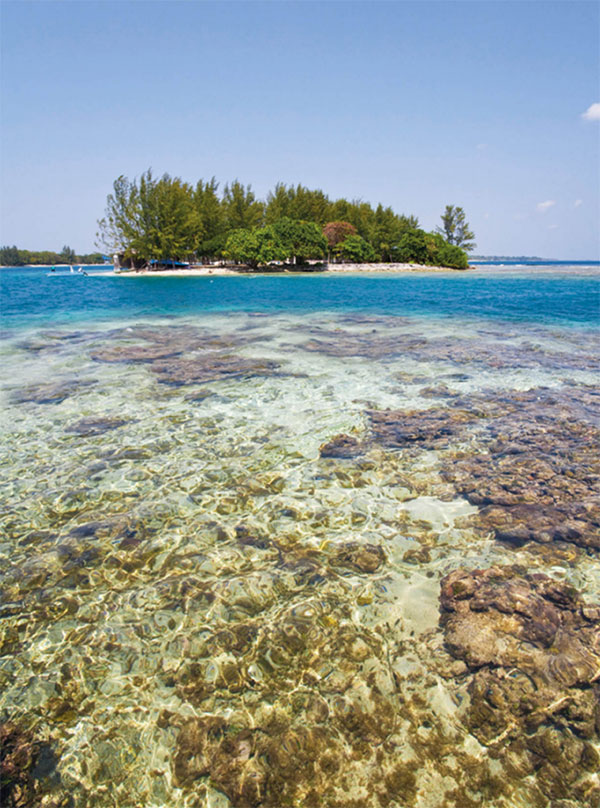
White sand and shallow reefs in the Bay Islands, Honduras.
AWL Images